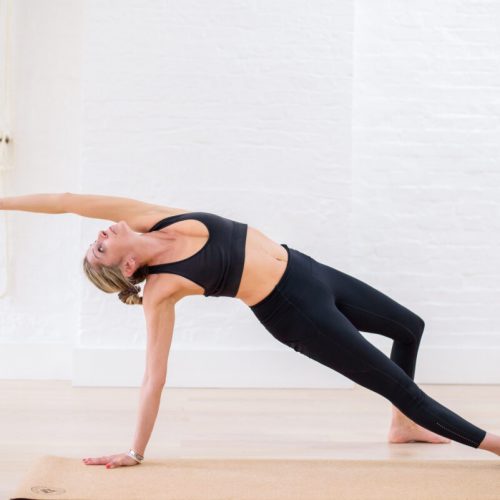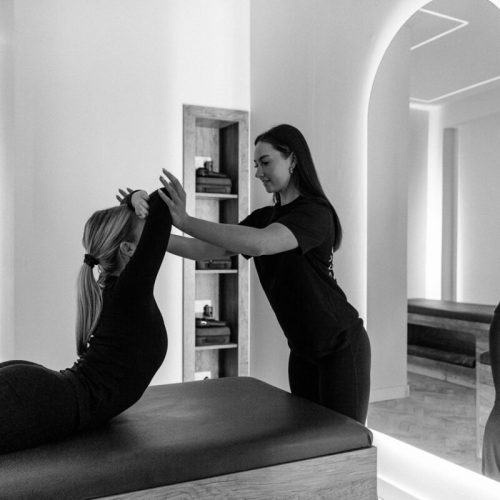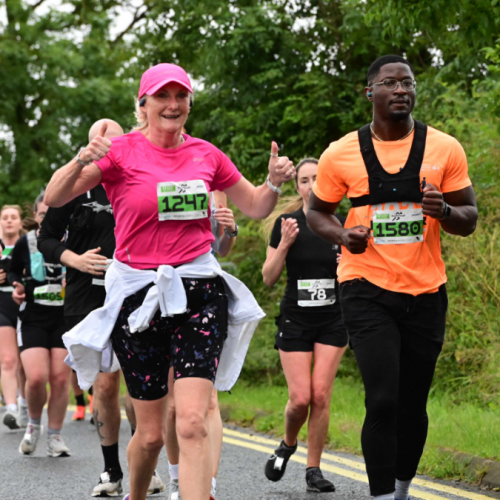HIIT has reigned as the explosive training method that gives you bang for your buck. Intense in every aspect of its nature, there is an alternative to the adrenaline-fueled fitness trend if you’ve maxed out on the sweat-soaked, heart-pounding routines. Quieter, yet equally transformative, Low-Intensity Steady State (LISS) is the approach that is gaining momentum. Emerging as the understated hero for fat loss, LISS deliberately focuses on gentle, sustained efforts. This caters particularly to women and those who want to exercise in a way that supports instead of hinders the delicate balance of hormones. We speak to expert Fitness Coach, Peter Cobby, to get the low-down on LISS training to fully understand how to incorporate the steady approach to exercise into our routine.
What is LISS?
Low-intensity steady-state exercise (known simply as LISS) is a form of prolonged exercise that requires very little instruction. You may also have heard of its original name, Steady State Training (SST).
There are numerous advantages behind this form of activity, ranging from health benefits like lowering blood pressure and enhancing brain function to its more aesthetic effects like reducing body fat and maintaining muscle mass.
But the positive I like to focus on is its ability to reduce stress. Stress, especially in today’s fast-paced living, is the thing that is holding many of us back from achieving our fitness and health goals.
How long should a LISS workout be & how many times a week should we be doing it?
A LISS workout can range anywhere from 15 minutes right up to a few hours. The time you put in will only increase the fat-burning effect. Your recovery time between workouts is drastically reduced as the stress on your body is minimal. This means we can get great benefits from 3 or more times per week. I like to put it into total numbers for the week though, aiming for around 150 minutes or more. The suggestion of 10,000 steps per day is a good starting point.
What does a LISS workout involve?
This type of workout will have you in a Zone 2 Heart Rate, that is 55-65% of your maximum output. In stark contrast to a HIIT workout that brings you to 85% or more for short periods. So, it’s much more manageable for most of us, drastically reducing the stress placed on the body.
How does LISS compare with HIIT?
LISS & HIIT are simply 2 tools in your exercise tool kit. While one requires less physical effort, it does require more time. HIIT has long been touted as the superior for body fat loss, but studies show that over a 12-week period, there is very little difference in overall body fat loss between groups.
The 2 factors that do come into play are the enjoyment of the workouts and the time to complete the workouts. HIIT is obviously more time efficient, ranging from as little as 4 minutes (TABATA) but the enjoyment for people who are new to exercise (and this is important) is higher in the LISS group. This means that the LISS group are more likely to continue and the HIIT group may take more breaks between workouts.
Why Is LISS good for fat loss?
The reason LISS is so good for fat loss comes down to how your body uses energy. The two energy systems used by your body are the aerobic and anaerobic pathways. LISS is an aerobic exercise, meaning it requires oxygen and the consumption of stored fats as energy. This type of exercise is used mostly by the endurance athlete (marathon).
HIIT is an anaerobic form of exercise, it does not require oxygen and is fuelled mostly by stored glycogen (carbohydrates). This type of exercise is used mostly by the sprinter. Interestingly, if unused, excess glycogen will turn into stored fat, so a double approach is more effective for fat loss.
What types of training can you use as LISS?
LISS is the most accessible form of exercise because it requires no equipment or expertise to start. Walking, light jogging, hiking, cycling, or swimming at a gentle pace are just a few great methods. Essentially though, you want to be able to maintain the effort for 15 minutes or more. With more time burning more energy stores.
How do you monitor LISS training?
There are a few ways we can monitor the heart rate, but knowing where it needs to be in the steady state zone will require you to know what your maximum heart rate is.
So let’s use this equation:
220 – (your age) = MaxHR
For LISS exercise we want to be between 55-65% of the above number.
Using a 45-year-old woman as an example, she would need to be between 96 – 114 beats per minute, and a 20-year-old would need to be between 110-130 bpm.
You can monitor your heart rate using any form of wearable tech that has this as a function. You can now wear a smartwatch, such as an Apple Watch or Fitbit to keep track, you just need to be able to see the numbers.
My favourite method has always been gadget-free. Can you hold a conversation without losing breath? Then you’re at zone 2. As soon as you find the breathing difficult and you can only say 1 or 2 words, then you should slow it down. Remember this pace you should be able to hold for a long period of time.
How does LISS affect our health outside of the physical benefits?
LISS is a form of exercise that is really beneficial for reducing stress and is not so taxing on cortisol levels compared to other forms of exercise such as HIIT. It’s also great for our mental well-being! Studies have shown that it improves mood, can reduce the effects of depression, lowers your heart rate and blood pressure and aids in recovery. Not bad for a stroll in the park!
How has LISS been transformative for people?
Because it is so targeted at using fats as energy, it is my preferred method for helping people reduce weight. Combined with a targeted diet it can be the most effective at reducing weight, especially for women over 40. With changing hormones and a tendency toward midline body fat storage due to rising cortisol, a switch to calmer workouts may be the key to success in terms of fat loss.
If you have been struggling to get the pounds off, switching from your high-intensity classes to more endurance-based work may be just the ticket you’re looking for. Combine this with toning classes like Barre or Pilates that keep the muscles strong and you may be onto a winning strategy.
Are there any fitness classes that align with LISS training?
Most classes nowadays are designed to entertain, and a HIIT workout does a really good job of this. But a LISS workout may be a little harder to find. My suggestion then is to combine Pilates or Barre style classes (Frame has plenty of options, as does Heartcore) with 20-30 minutes of steady-state cardio after the class. This way your muscles are being used to help provide strength and support, burning through those initial stores of glycogen, and LISS is using up the remaining fat stores. Perfect combo!
Peter Cobby, Fitness Coach for London’s Fashion Industry and founder of Project LALA
The post LISS 101: Mastering the Art of Low-Intensity Steady State Workouts appeared first on Hip & Healthy.



